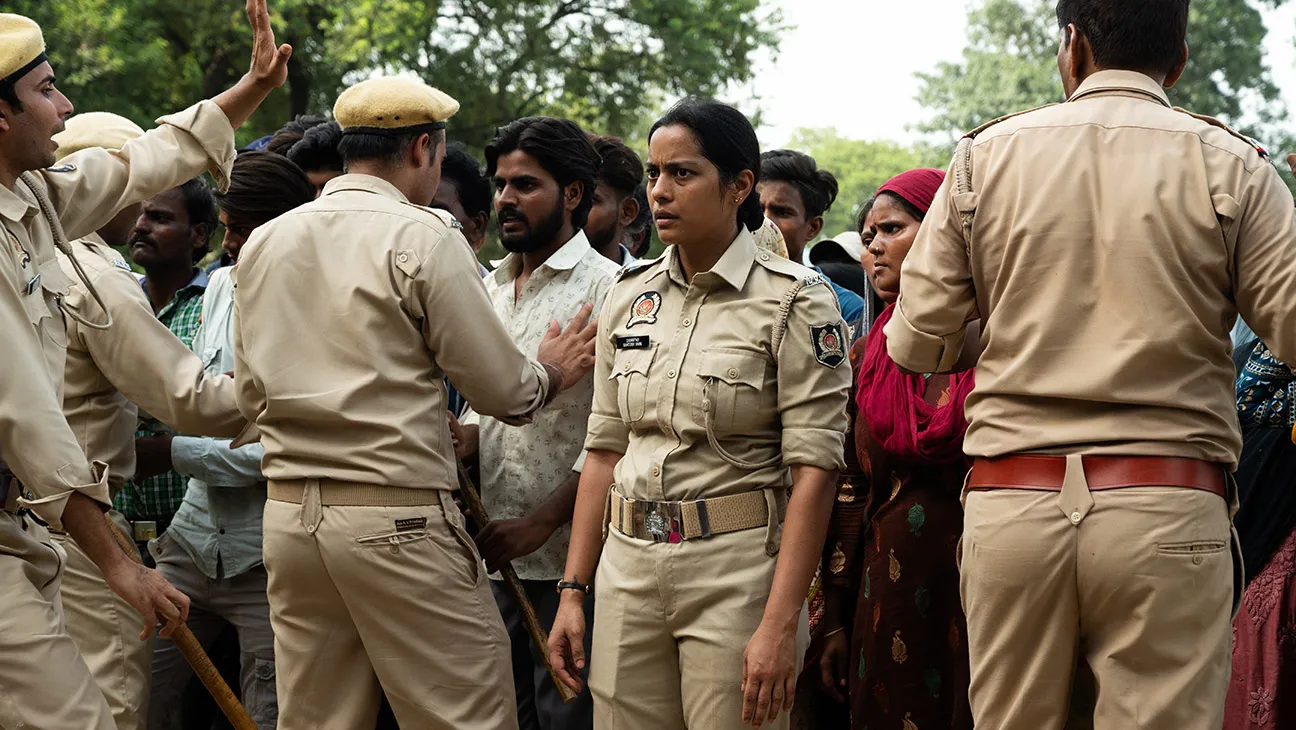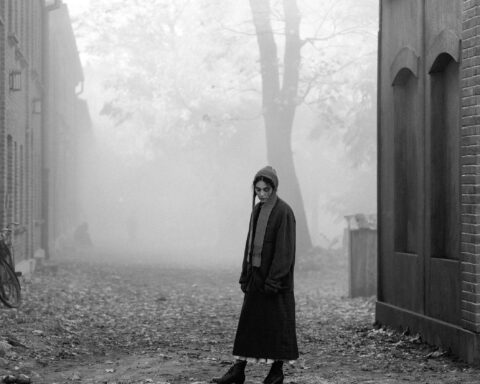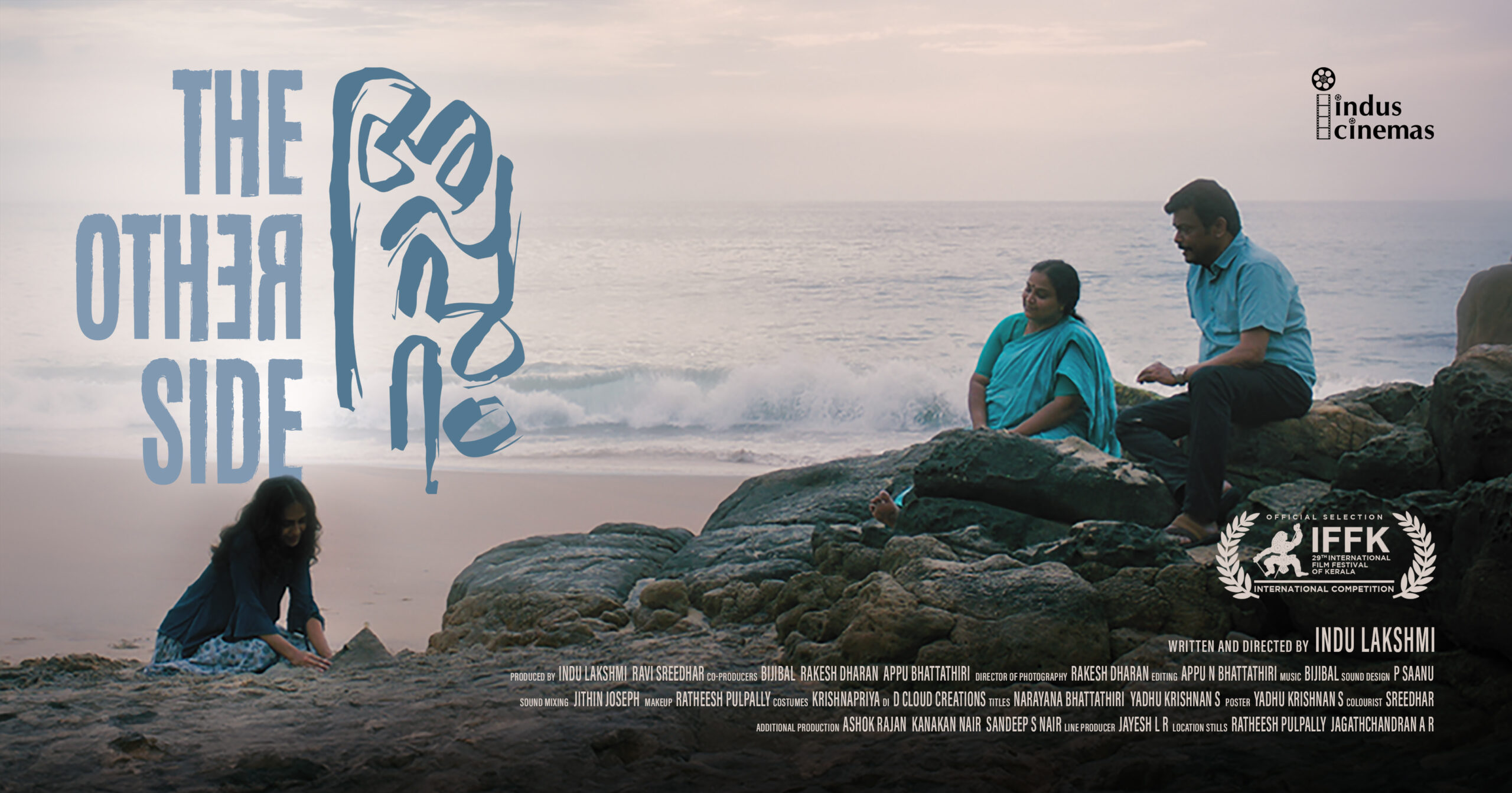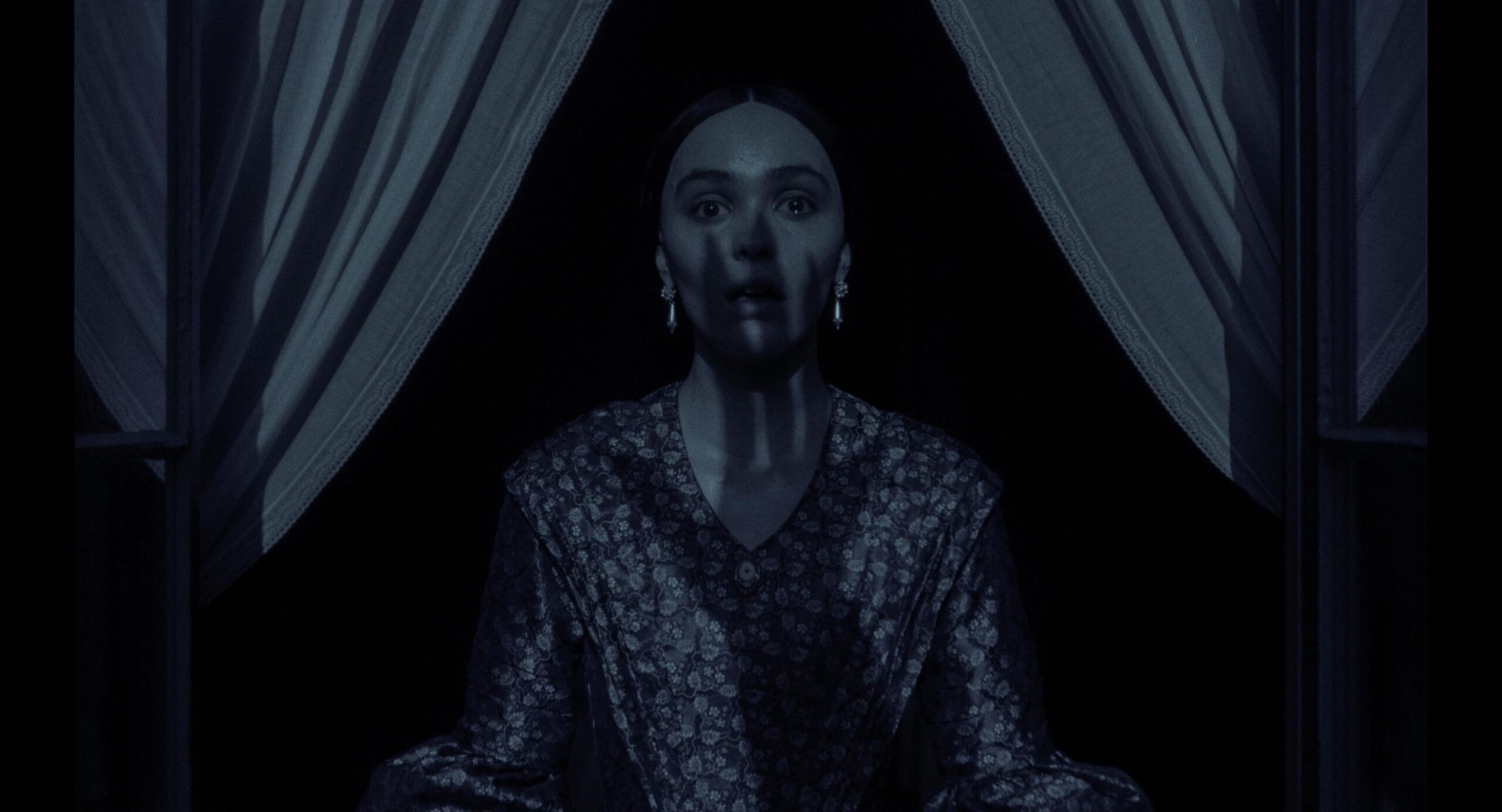Sandhya Suri‘s debut feature film, Santosh, is a gripping and unsettling film that tackles casteism, police brutality, and the justice system’s failures. It follows Santosh, a young woman whose resilience is tested as she navigates a society where injustice is systemic. The film offers no easy answers, depicting the brutal realities of discrimination and the devastating impact on marginalized communities. It offers no easy answers, leaving viewers grappling with the weighty despair of a society where the very rules designed to protect its citizens are inherently unjust for marginalized communities. It provides a stark and uncompromising portrayal of a justice system crippled by bureaucracy, distracted by trivialities, and ultimately biased against those it is meant to serve. The film unflinchingly delves into the societal underbelly, exposing the deeply entrenched hierarchies of caste, the insidious pervasiveness of discrimination, and the brutal reality of religion-based violence that continues to plague Indian society. While the film’s ambitious attempt to portray this harsh social reality is commendable, it may leave viewers grappling with a sense of emptiness due to its lack of fresh perspectives.
Santosh has lost her husband, who worked as a constable in the police, to a riot. Now, a widow and her in-laws do not want her to be a part of their family due to their past differences with her alleged ill-behavior. The quarter where she lived with her husband will also be lost to her, and her husband’s pension is also not substantial. Driven by necessity, she joins the police force through a government scheme. As a police constable, she gradually becomes aware of the biases and discrimination within the department. Soon, a girl from the lower caste, Devika Pippal, is raped and murdered, and the negligence of the police comes to the forefront. A new officer, Geeta Sharma, takes charge of the case and the investigation progresses with an urgency. Santosh uncovers a crucial piece of evidence, and a Muslim boy, Saleem, is suspected of harassing Devika. The police launch a manhunt for Saleem, who is now absconding. After a lengthy pursuit, Santosh and Devika apprehend Saleem. However, the arrest reveals a resentful and disturbing reality.
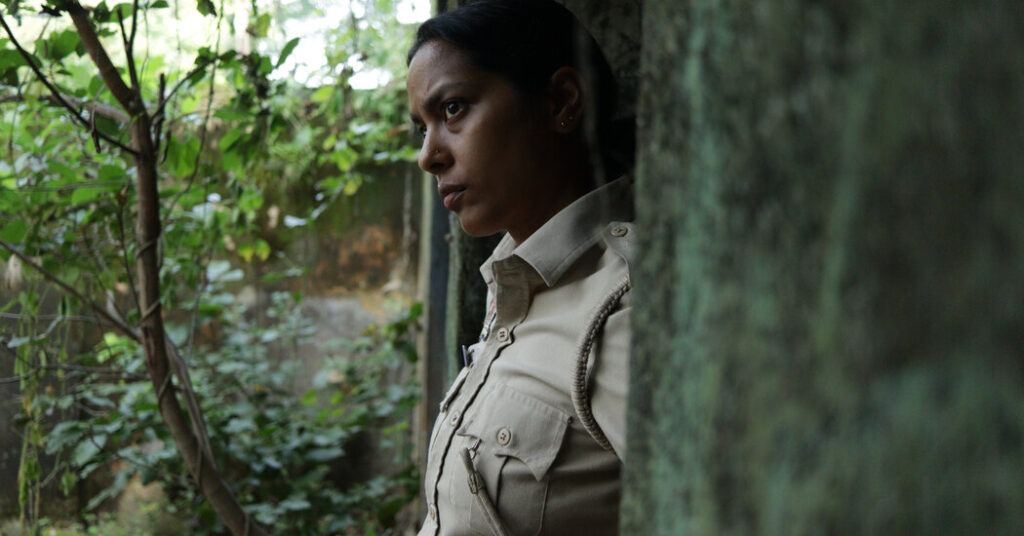
As the film begins, we observe Santosh trying to cross a busy street teeming with vehicles while attempting to connect with her mother over the phone. She is panicking, and there is a sense of helplessness in her voice. This foreshadows the fate she is about to encounter in the rest of the film. Working in a police department as a constable dominated by male officers, she has to navigate certain terms and conditions dictated by the power structure and hierarchy. She is required to follow the orders of her senior officials and is not permitted to file the complaint of a helpless father whose daughter has gone missing. Taking the officer’s puppy for a walk further underscores her lack of agency within the system. She becomes part of a team more concerned with instilling moral or cultural values in young couples through coercion, taking bribes, and allowing a young girl from an affluent family to thrash her boyfriend while turning a blind eye to the sufferings of those from lower castes. She has joined this profession out of compulsion, not choice. As a result, she does not dare to voice a protest and absorbs all of this with sealed lips. The discriminatory behaviour of her colleagues and their blatant disregard for justice weigh heavily on her. She suppresses her frustrations, knowing her opinion carries little weight in such a deeply stratified system, which offers a cold, hard look at what it means to be poor.
The film is set in the fictional state of Chirag Pradesh, which could represent any part of India where people from the upper caste dominate the social and political landscape. Dead domesticated animals are dumped into the wells of lower-caste villagers to contaminate their water supply and assert caste superiority. A purification ceremony is performed inside a police station after the lifeless body of a young lower-caste girl is sheltered within the premises. When senior official Geeta Sharma takes charge of the case involving the rape and murder of the girl, she is acutely aware of the inherent biases and the often-dysfunctional workings of the government machinery. She chooses to play by the rules, never going against the entrenched power structures. She is well aware that someone must be held accountable for the heinous crime, and it is far easier to pin the blame on a person from the minority community. In one chilling scene, Saleem, a Muslim man, is mercilessly tortured by the police in an isolated location. Santosh, a junior officer, partakes in the brutality, venting her pent-up rage on the battered man. Her actions are fueled by personal trauma—an incident in her past where someone from the Muslim community was responsible for her husband’s death. These are some of the unflinching instances that collectively reflect the grim realities of systemic oppression, caste and religious prejudice, and the complicity of individuals who become instruments of a corrupt and unjust system. In this sense, the police station and the workings of the policemen serve as a microcosm of a society where power is wielded to perpetuate inequality. The process of justice is selectively applied, where the marginalised are silenced or exploited to maintain the status quo.
Though this social realist drama takes us to the dark heart of cynicism and corruption within the police force and the town’s authorities—showcasing the casual violence and desperation of the oppressed who must make whatever accommodations they can with those in power—it never clearly delves into the protagonist’s inner world. If the story of the film were to be summed up, it would be the tale of an ordinary woman who takes up the job of a constable in search of a secure life, only to find herself entrenched in a vicious cycle of exploitation and complicity. Her reaction to the events unfolding around her mirrors her quiet resignation from the system’s injustices. However, her actions lack a central, meaningful dramatic argument that could give her journey greater depth or resonance, and this aspect of the narrative makes the film feel emotionally distant and less impactful.
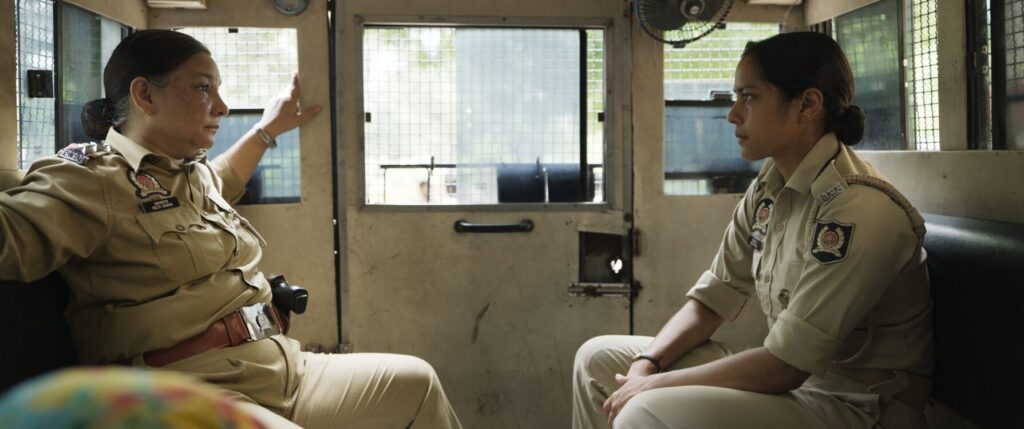
The cinematography by Lennert Hillege frequently pauses on a sideways glance or an intense close-up of Santosh’s anguished, conscience-stricken face, suggesting pivotal moments where she could have stood up to the injustices happening before her. The imagery of her brooding in her staff quarters or standing stranded in the dark of night during a manhunt symbolizes her being at a moral crossroads, trapped in a labyrinth of ethical dilemmas and systemic manipulations. The sound design by Etienne Haug, Nikola Medic, and Bruno Tarrière intensifies the relentless dramatic thrust of the film. The viewers are plunged into muffled darkness, where the chilling sounds of a man being beaten mercilessly resonate. Each blow and cry heightens the sense of horror. None of this is left to the imagination, as the soundscape vividly captures the brutality. Adding to the discomfort in verbal abuses, which is equally distasteful and underscores the pervasive toxicity of the environment. Maxime Pozzi-Garcia’s editing keeps the flow of the film taut and seamless. The pacing ensures that each of the scenes smoothly maintains the tension and gravity of the narrative.
The two leading female characters share an unspoken connection that creates an intimate and nuanced dynamic. Shahana Goswami portrays Santosh with a quiet intensity, capturing her transformation from an ordinary woman to a uniformed officer. Despite her struggles, she becomes a silent observer of society’s deep-seated flaws. Through her perspective, we gain a bitter understanding of the systemic injustices and moral complexities that define her world. Sunita Rajwar delivers a commanding performance as Geeta Sharma. She embodies a gutsy senior police officer who has risen through the ranks in a profession rife with misogyny and dominated by male colleagues. She exudes authority with a stern attitude while balancing it seamlessly with moments of empathy, particularly toward her hardworking junior officer.
Santosh is crafted with control and clarity, offering a raw depiction of the struggles faced by the marginalized. It creates an atmospheric portrayal of a society steeped in poverty, corruption, and discrimination, and the filmmaker has courageously presented a bleak and pragmatic portrait of a world where these issues persist. However, as the end credits roll, we are impassively returned to the harsh reality of survival without having gained any new insights. The film doesn’t offer a revelation beyond what we already know about the conditions in the country where the story is set.
